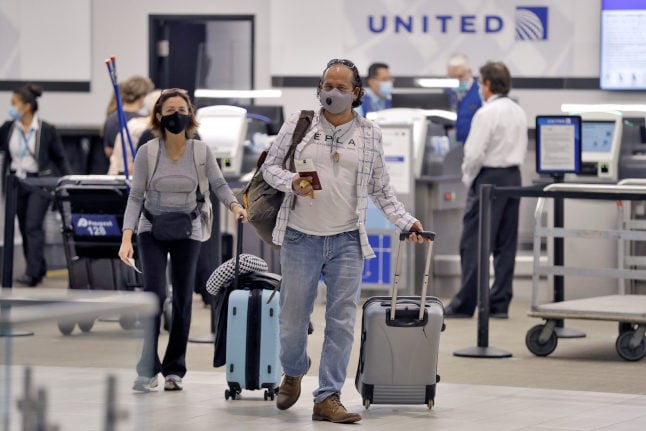Are US travellers exempt from the entry ban to Sweden?
No, not in general.
There is currently (and has been since March last year) a ban in place on travel to Sweden from non-EU/EEA countries (Switzerland, Andorra, Monaco, San Marino and the Vatican count as EU/EEA countries for this purpose), although it is important to note that it is dependent on the country you travel from, not nationality or residency.
Only the following non-EU/EEA countries are currently exempt from the ban, which means you can travel to Sweden from them regardless of the purpose of travel, including tourism: Australia, New Zealand, Rwanda, Singapore, South Korea and Thailand. This is in accordance with the EU’s recommendations on entry restrictions and is based on how safe those countries are considered to be in terms of coronavirus.
Are there any other exceptions that do apply to US travellers?
If you are a Swedish citizen travelling from the US or elsewhere, you are always permitted to enter Sweden, but there are exceptions for foreign nationals, too.
These include: people who live in or are moving to live in Sweden or another EU country, people with a close family connection in Sweden (siblings or cousins are generally not included), people studying in Sweden, or people who are travelling for urgent family reasons or work in certain key jobs. That’s not an exhaustive list and you can find a full and up-to-date list on the Swedish police authority’s website.
Remember that it is up to you to bring evidence that prove you are covered by one of the exemptions, and it is up to the border police to decide whether or not to accept it. That will be done on the spot, and it is not possible to get advance approval.
Do I need to show a negative Covid-19 test?
It depends.
The requirement to show a negative Covid-19 test result applies only to adults over 18. It does not apply to Swedish citizens, nor to people who hold a residence permit (including if you’re moving for the first time), have urgent family reasons, work in the healthcare transport sector, work in goods transport, work in international police or customs work, are entitled to humanitarian protection, or who need urgent healthcare in Sweden. Note that the list of exceptions is not identical to the entry ban exceptions, so do make sure you check both categories.
Also note that the test must be no more than 48 hours old, and there are certain criteria that have to be met in terms of what types of tests and test certificates are accepted.
Even if you aren’t legally obliged to show a negative test on the border, everyone apart from young children are strongly recommended to get tested on the day of arrival in Sweden and again five days after that, and to self-isolate for at least seven days.
Can I come to Sweden if I’ve been fully vaccinated against Covid-19?
Proof of vaccination isn’t currently a factor in whether you are allowed to enter Sweden, so unless you’re covered by one of the exemptions above, the short answer is no.
This will probably change before the summer, with several plans for “vaccine passes” under way which would allow vaccinated people to travel more easily. The European Union is also working on developing a common framework for “digital certificates” among member states, with the bloc’s tourism chief announcing on Sunday that the certificates should be available within “two to three months”.
In the US meanwhile, President Joe Biden in January ordered agencies to start looking at developing an international vaccine certificate.
As more and more countries issue digital or physical certificates showing vaccination, antibodies or other immunity, Sweden is likely to include that in its entry requirement, probably in concert with other countries in the European Union.
Strictly speaking, you didn’t answer the question in the headline. Restrictions have been in place for a year now – when will it be possible to travel freely from the US to Sweden again?
Sorry, we tried to answer as much as we could! But unfortunately there is little we can say with certainty at the moment, as it depends on the health situation in both countries and how it develops in the future.
We can tell you that Sweden’s entry ban for non-EU/EEA travellers is currently in place until May 31st, but it has been extended several times in the past year, often at relatively short notice, so you may want to hold off on booking tickets for a June trip to Sweden.
Before travelling to Sweden, check with national authorities for information on the latest restrictions and exemptions – that’s the police and the government. Be aware that information provided elsewhere, for example on the ReOpen EU website, may not be up to date. The “updated” time shown at the top of the article you’re reading right now shows when The Local last confirmed the information on this page.
What happens when I arrive in Sweden?
First, remember to follow the advice to get tested on the day of arrival and on the fifth day, and to self-isolate for a week.
Then there are more guidelines to be aware of, such as observing social distancing and staying at home if you have symptoms. Face masks are recommended on public transport during rush hour (or all day in some regions). Be aware that the situation may change fast, so check Swedish crisis information site Krisinformation to make sure you’re aware of the current health and safety recommendations.
Keep up to date with the latest coronavirus news in Sweden via The Local’s coronavirus page or our paywall-free blog.



 Please whitelist us to continue reading.
Please whitelist us to continue reading.
Member comments